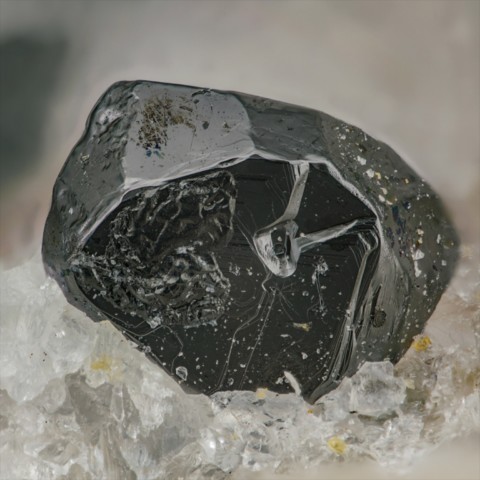 Geikiélite - Encyclopédie
Geikiélite - Encyclopédie
GEIKIELITE
Class : Oxides and hydroxides
Subclass : Oxides
Crystal system : Trigonal
Chemistry : MgTiO3
Rarity : Rare to uncommon
Geikielite belongs to the ilmenite group of which it constitutes the magnesian term. There is also a complete solid solution towards the iron pole, ilmenite itself. It is a mineral typical of the contact metamorphism of dolomites and magnesium limestones, as well as very magnesium rocks, such as serpentinites, kimberlites and sometimes carbonatites. It is also present in alluvial deposits, notably diamondiferous placers resulting from the dismantling of kimberlites : geikielite is thus a diamond tracer mineral. It was named in honor of the Scottish geologist Sir Archibald Geikie. Geikielite normally occurs in tumbled grains, very rarely in tabular to prismatic crystals of 25 mm maximum. Geikielite is black or very dark brown.
Main photo : Geikielite from Monte dei Tre Abati, Coli, Piacenza Province, Italy © Serge Lavarde
Geikielite in the World
Twinning
No twin known for this mineral species.
Fakes and treatments
No fakes recorded for this mineral species.
Hardness : 5 to 6
Density : 3.8 to 4.2
Fracture : Conchoidal
Streak : Purple brown
TP : Translucent to transparent
RI : 1.950 to 2.350
Birefringence : 0.360 to 0.370
Optical character : Uniaxial -
Pleochroism : Low
Fluorescence : None
Solubility : Hydrochloric acid
Magnetism : None
Radioactivity : None





